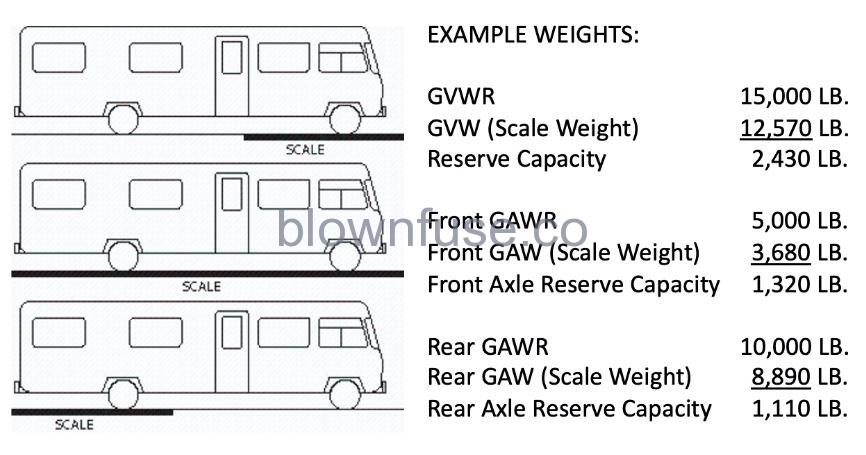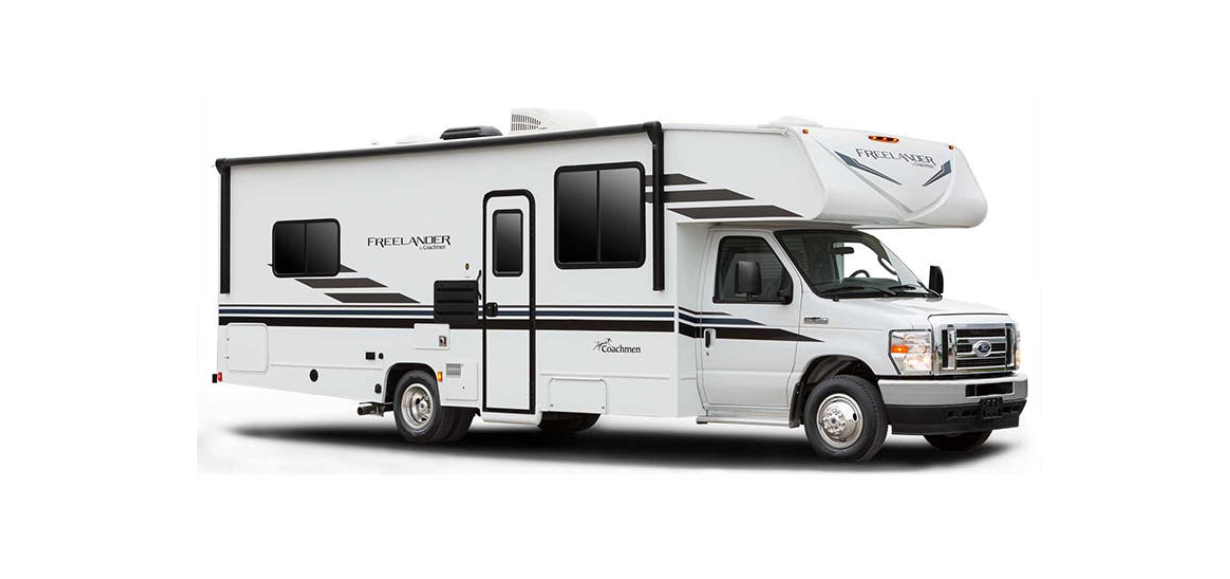
2022 Coachmen Freelander CLASS C MOTORHOMES Weighing Your Motorhome
Weighing Your Motorhome
In order to properly compute your load and load distribution, you must know both actual scale weights and the GAWR and GVWR found on the Weight Label on the motorhome. Weigh the motorhome with all anticipated passengers, equipment, luggage, and fluids onboard as if you were beginning your trip. You will also need to weigh the motorhome periodically to ensure you are maintaining the correct weight and load distribution. Positioning Motorhome on Weight Scales:

To properly weigh your motorhome, follow this procedure:
- With all passengers in their seats and the RV fully loaded and level, pull onto the scales until the front axle ONLY is on the scale. Check the weight against the front gross axle weight rating. Ensure that the unit is level at all times to register accurate weights.
- Pull forward until both axles are on the scale. Check the weight against the gross vehicle weight rating.
- Pull forward again so that ONLY the rear axle is on the scale. Check the weight against the rear gross axle weight rating. Again, verify that the unit is level when recording this weight.
At this point, if you have any overload or imbalance, redistribute the weight and reweigh the motorhome. When you become familiar with how to load and weigh your RV, make a list and diagram to carry with you for easy reference.
Weight distribution is extremely important in the handling and wear of your motorhome. Remember to add the weight of any items purchased on your trip to the starting weight of your coach and to distribute the weight evenly. Also, keep in mind that if you make any major changes in the items you are carrying, it will be necessary to reweigh your RV.
Weighing Tips
- Cargo weight may vary greatly and will affect the total weight of your recreational vehicle. Always weigh the recreational vehicle at a certified weigh station equipped with platform scales.
- If you find that you have exceeded the GVWR of the recreational vehicle, you will have to remove items until you are within the specified limits. If you find that you have exceeded either of the GAWR’s, you will need to redistribute the load within the recreational vehicle to meet the specified limits.
- To help ensure that items will be evenly distributed, plan ahead before loading your RV. Not only will the recreational vehicle handle and ride better, you will also have reduced tire wear and increased fuel economy.
- Do NOT store heavy items near the front or rear of the RV as doing so could cause damage.
- To help keep weight reduced, empty the holding tanks before leaving on a trip and as often as possible when traveling. Carry only as much water as you will need for traveling. If needed, the water tanks can be used to help balance the weight in the motorhome (a gallon of water weighs 8.3 pounds).

